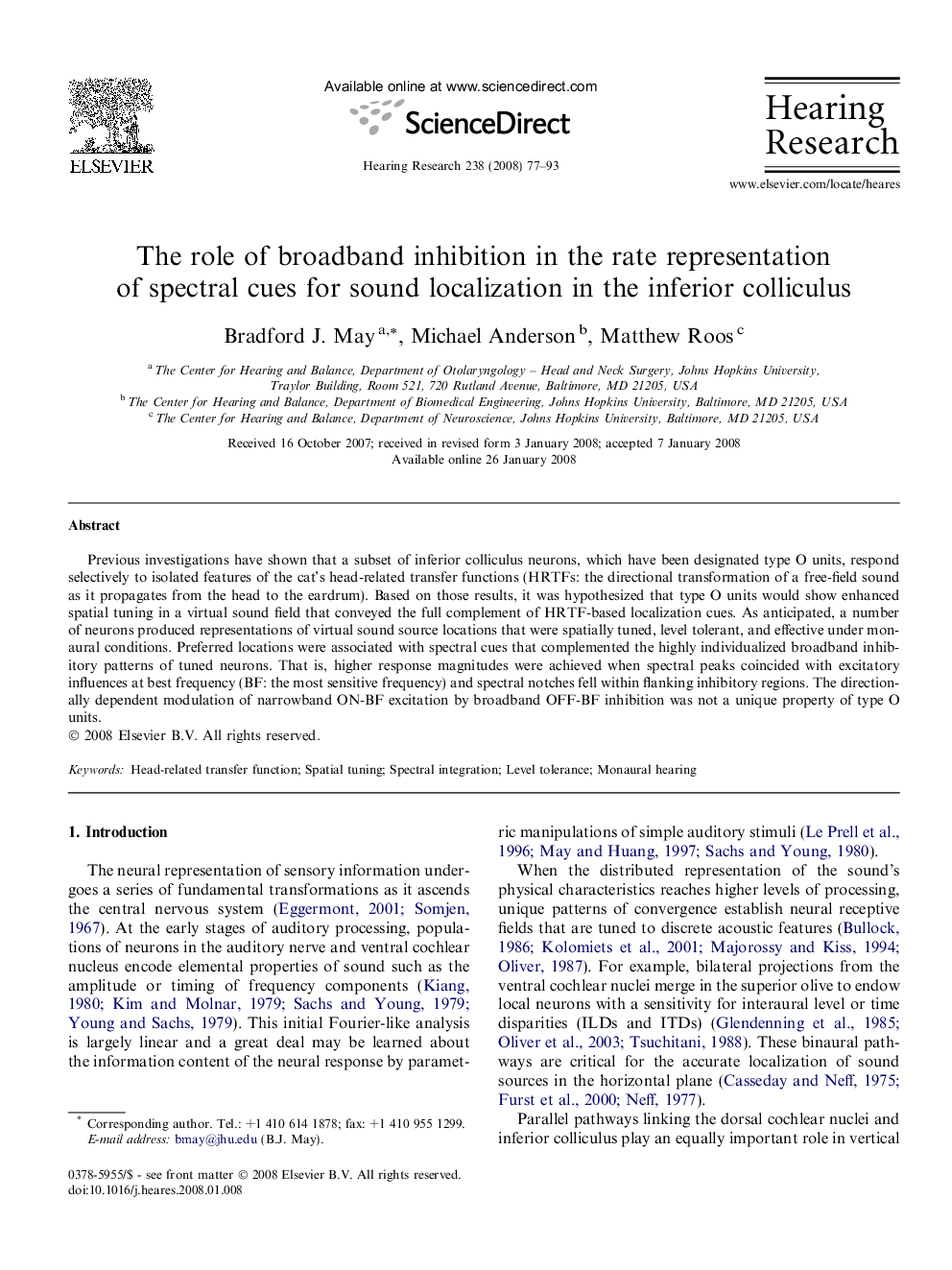| Article ID | Journal | Published Year | Pages | File Type |
|---|---|---|---|---|
| 4356106 | Hearing Research | 2008 | 17 Pages |
Abstract
Previous investigations have shown that a subset of inferior colliculus neurons, which have been designated type O units, respond selectively to isolated features of the cat's head-related transfer functions (HRTFs: the directional transformation of a free-field sound as it propagates from the head to the eardrum). Based on those results, it was hypothesized that type O units would show enhanced spatial tuning in a virtual sound field that conveyed the full complement of HRTF-based localization cues. As anticipated, a number of neurons produced representations of virtual sound source locations that were spatially tuned, level tolerant, and effective under monaural conditions. Preferred locations were associated with spectral cues that complemented the highly individualized broadband inhibitory patterns of tuned neurons. That is, higher response magnitudes were achieved when spectral peaks coincided with excitatory influences at best frequency (BF: the most sensitive frequency) and spectral notches fell within flanking inhibitory regions. The directionally dependent modulation of narrowband ON-BF excitation by broadband OFF-BF inhibition was not a unique property of type O units.
Related Topics
Life Sciences
Neuroscience
Sensory Systems
Authors
Bradford J. May, Michael Anderson, Matthew Roos,
